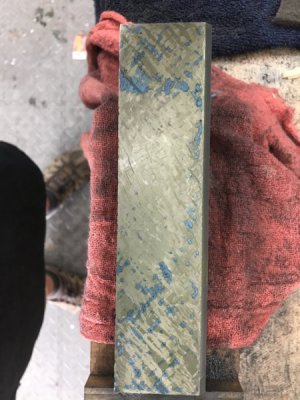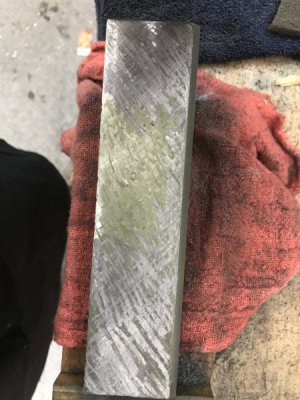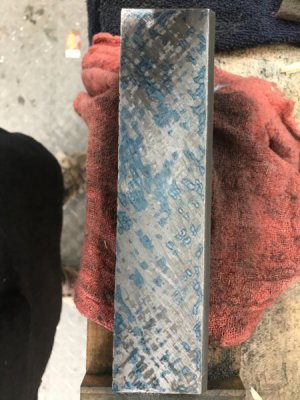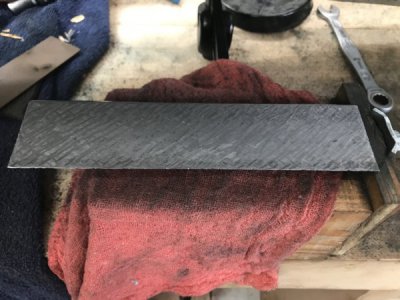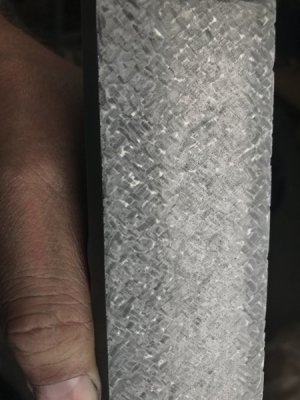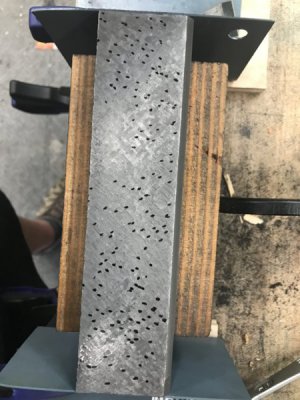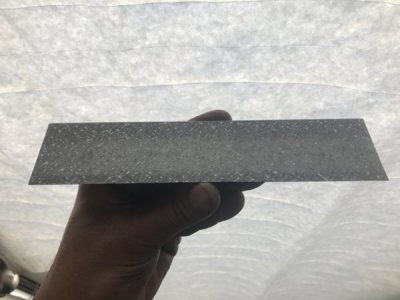- Joined
- Apr 21, 2015
- Messages
- 653
Stefan did a far better job of describing the basics than I can, but I thought I'd describe how I think of the process.
Basically, any surface has a number of hills and valleys. That's easy enough to visualize. In reality, though, some of the hills are effectively big mountains and some are hardly more than molehills. What makes things confusing though, is that you have multiple hills on top of one big mountain and multiple molehills on each individual hill.
When you mark up a part on the surface plate, only the highest points pick up bluing, of course. For the first few passes, these are the molehills on top of the largest hills on top of the largest mountains.
The scraping process is to first knock down all the mountains until they are just reasonably sized hills. Then knock down the larger hills until they are all roughly the same height. Then knock those down until all you're left with are molehills all on the same plane. At that point, the bases of the molehills are now resting on what was initially the lowest valley -- everything else has been knocked down to that level.
EVERYONE (myself included -- see above) makes the mistake of starting to finish scrape too soon, attacking individual blue marks instead of just mowing down fairly large swaths.
Here's an early spotting of the 8" part:
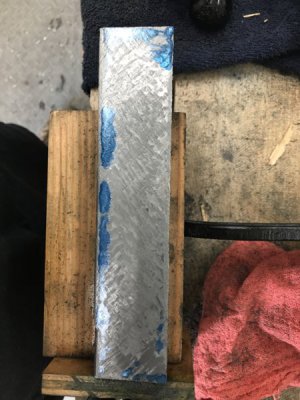
Think of the blue spots here as just the peaks of the Himalayas. The rest is a cloud covered valley. There are probably hills in that valley but it's too early to tell.
So attack the upper right corner, left middle, and lower right corners with gusto. Don't worry too much about "staying in the lines" and only removing blue. Also, don't worry too much about individual separated strokes -- just "paint scraping" as Richard calls it is fine.
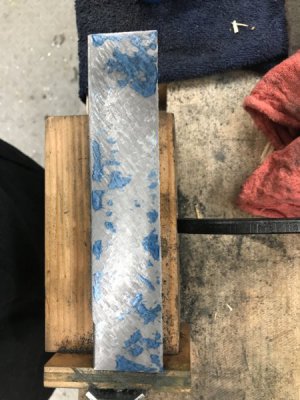
Now we've revealed a little more of the topography. The valley is crescent shaped. Let's knock down these smaller mountains. Now we add the right middle to our points of attack, but continue paint scraping.
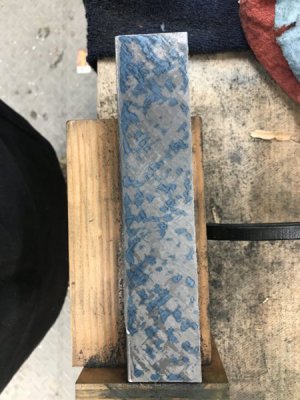
This photo was taken about 45 minutes after the first one in this series of three (probably around ten passes altogether). Now none of the valleys are larger than a dime, so I need to start taking a bit more care with shorter strokes and no more paint scraping.
I actually started gradually increasing the amount of care I was taking even prior to this photo.
The first pass or two was true paint scraping with no concern regarding individual scrape marks, direction, or length.
Quickly, though, I switched to "crosses" before each blueing -- removing "mountains" by making short rows of individually separated scrape marks on one 45 degree angle, followed by a row in the other direction to make X shaped marks. It's VERY important to start making individual marks and changing direction regularly or you will start making ruts and getting washboard chatter.
About two or three passes before the last photo, I began scraping in only one direction (half the X) before each blueing. I still took care to alternate the direction each pass, though.
I'm mostly targeting the peaks of the mountains each pass, but I'm NOT overly focused on the individual blue marks at this stage. In fact I'd probably do an even better job if I took off my glasses and let the blue marks blur into fairly large blobs!
This is how you want to "see" that second photo above:
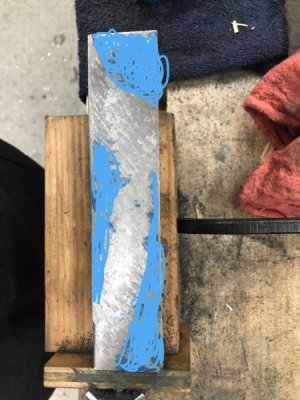
That's how I think of the process anyway.
I hope this is of some use to someone! (Laugh)
Regards,
--
Rex
Basically, any surface has a number of hills and valleys. That's easy enough to visualize. In reality, though, some of the hills are effectively big mountains and some are hardly more than molehills. What makes things confusing though, is that you have multiple hills on top of one big mountain and multiple molehills on each individual hill.
When you mark up a part on the surface plate, only the highest points pick up bluing, of course. For the first few passes, these are the molehills on top of the largest hills on top of the largest mountains.
The scraping process is to first knock down all the mountains until they are just reasonably sized hills. Then knock down the larger hills until they are all roughly the same height. Then knock those down until all you're left with are molehills all on the same plane. At that point, the bases of the molehills are now resting on what was initially the lowest valley -- everything else has been knocked down to that level.
EVERYONE (myself included -- see above) makes the mistake of starting to finish scrape too soon, attacking individual blue marks instead of just mowing down fairly large swaths.
Here's an early spotting of the 8" part:

Think of the blue spots here as just the peaks of the Himalayas. The rest is a cloud covered valley. There are probably hills in that valley but it's too early to tell.
So attack the upper right corner, left middle, and lower right corners with gusto. Don't worry too much about "staying in the lines" and only removing blue. Also, don't worry too much about individual separated strokes -- just "paint scraping" as Richard calls it is fine.

Now we've revealed a little more of the topography. The valley is crescent shaped. Let's knock down these smaller mountains. Now we add the right middle to our points of attack, but continue paint scraping.

This photo was taken about 45 minutes after the first one in this series of three (probably around ten passes altogether). Now none of the valleys are larger than a dime, so I need to start taking a bit more care with shorter strokes and no more paint scraping.
I actually started gradually increasing the amount of care I was taking even prior to this photo.
The first pass or two was true paint scraping with no concern regarding individual scrape marks, direction, or length.
Quickly, though, I switched to "crosses" before each blueing -- removing "mountains" by making short rows of individually separated scrape marks on one 45 degree angle, followed by a row in the other direction to make X shaped marks. It's VERY important to start making individual marks and changing direction regularly or you will start making ruts and getting washboard chatter.
About two or three passes before the last photo, I began scraping in only one direction (half the X) before each blueing. I still took care to alternate the direction each pass, though.
I'm mostly targeting the peaks of the mountains each pass, but I'm NOT overly focused on the individual blue marks at this stage. In fact I'd probably do an even better job if I took off my glasses and let the blue marks blur into fairly large blobs!
This is how you want to "see" that second photo above:

That's how I think of the process anyway.
I hope this is of some use to someone! (Laugh)
Regards,
--
Rex
Last edited:


